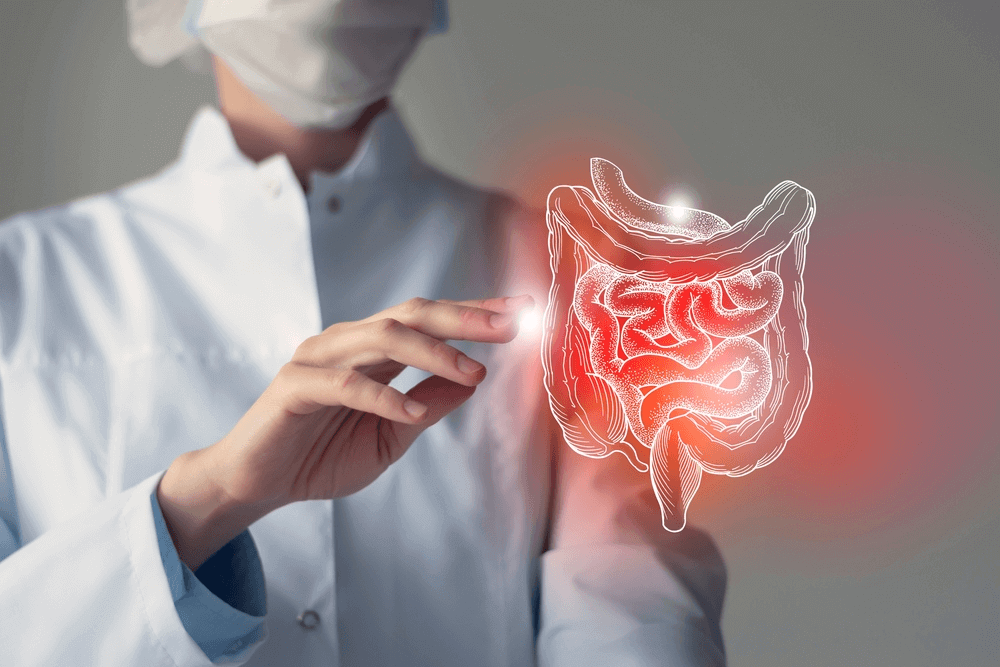
Learn the causes, types, symptoms, and treatment of ulcerative colitis
Introduction:
The large intestine becomes irritated and develops ulcers (open sores) as a result of ulcerative colitis (UC). It is a member of the inflammatory bowel disease subclass of illnesses (IBD). It frequently results in diarrhoea that is bloody, urgent, and cramping. These symptoms can occasionally cause someone to wake up in the middle of the night to use the restroom.
The rectum, which is near the anus, is where the inflammation in ulcerative colitis typically begins (where poop leaves your body). The colon may be partially or completely impacted by the escalating inflammation. The inflammation that appears in the rectum and lower part of the colon is known as ulcerative proctitis. Pancolitis is the medical term for when the entire colon is afflicted.
The consequences of ulcerative colitis can occasionally be fatal and draining. Although there is no known cure, there are several innovative therapies that can significantly lessen the disease's signs and symptoms and result in long-lasting remission.
Causes:
It is still unclear what exactly causes ulcerative colitis. Previously, stress and nutrition were suspected. Researchers now understand that while these variables may worsen ulcerative colitis, they do not cause it.
Immune system dysfunction is one potential factor. An abnormal immune response results in the immune system targeting the cells in the digestive tract when it attempts to combat an invading virus or bacteria.
Additionally, it appears that hereditary factors contribute to the higher prevalence of ulcerative colitis in families with affected individuals. However, this family history is uncommon among those who develop ulcerative colitis.
Types:
The location of ulcerative colitis is frequently used by medical professionals to categorise it. The symptoms of each kind frequently overlap. The following are types of ulcerative colitis:
- Ulcerative proctitis: Only the region nearest to the anus, commonly known as the rectum, is inflamed. The only indication of the illness may be rectal bleeding.
- Proctosigmoiditis: The rectum and sigmoid colon, the lower end of the colon, are affected by inflammation. Bloody diarrhoea, painful stomach cramps, and an inability to urinate despite strong urges are other symptoms. Tenesmus is a name for this.
- Left-sided colitis: The rectum and the sigmoid and descending parts of the colon are all inflamed. Bloody diarrhoea, left-side stomach discomfort and cramps, and a strong desire to urinate are all symptoms.
Symptoms:
Over time, the symptoms of ulcerative colitis frequently grow worse. At first, you could observe:
- Urgent bowel movement or diarrhoea.
- Cramps in the gut or abdomen.
- Loss of weight.
- Anaemia (lower number of red blood cells)
Later you can also observe:
- Bowel motions that include pus, blood, or mucus.
- Painful cramps.
- Raised skin.
- Mouth ulcers
- Painful joints
- Painfully red eyes.
- Liver illness.
- nutrients and fluids are lost.
Pediatric ulcerative colitis symptoms are comparable and may also include sluggish or delayed development. It's crucial to let your physician know about all symptoms because certain ulcerative colitis symptoms in children might resemble those of other illnesses.
Diagnosis:
Your healthcare professional must rule out other conditions before making the ulcerative colitis diagnosis in children, teens, and adults. Following a physical examination, your doctor could suggest:
- Blood tests: Your blood might reveal indications of anaemia or infection. Low blood iron levels are known as anaemia. It can indicate that your colon or rectum is bleeding.
- Stool specimens: Your excrement may contain indicators of an illness, parasites (small creatures that may dwell in a person's body), or inflammation.
- Imaging tests: Your doctor might want to see images of your rectum and colon. You could undergo tests like a computed tomography (CT) or magnetic resonance imaging (MRI) scan.
- Endoscopic examinations: An endoscope is a small, flexible tube that has a camera at one end. To examine the rectum and colon, specialised physicians can insert an endoscope into the anus. Colonoscopy and sigmoidoscopy are two common endoscopic procedures.
Treatment:
Surgery or drug therapy is often used to treat ulcerative colitis.
The treatment of ulcerative colitis may be successful with a variety of drug classes. The kind you need will depend on how bad your ailment is. Certain people may not respond well to certain drugs, while others may. It could take some time before you find a drug that works for you.
Additionally, you must balance the advantages and dangers of any course of therapy because some drugs have severe adverse effects.






